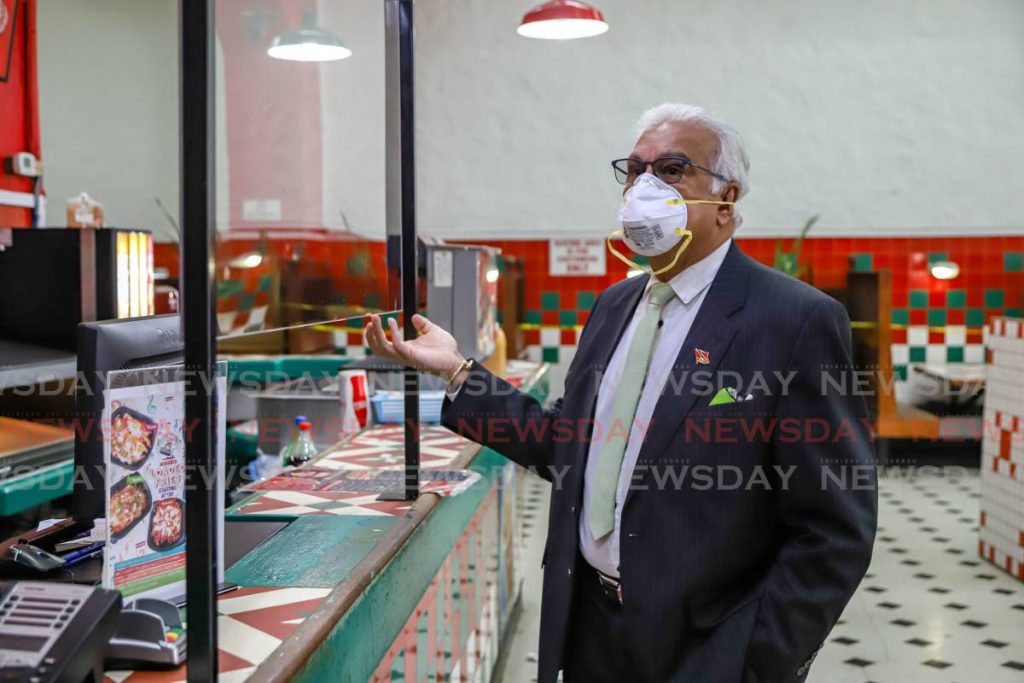Masks: What are the differences?

There has been confusion surrounding the types of N95 masks. The term N95 mask is used interchangeably to mean surgical mask, surgical N95 respirator and industrial N95 respirator.
During Wednesday's press conference, Health Minister Terrence Deyalsingh said the mask he wore during his walkabout in downtown Port of Spainn on Tuesday was a "construction N95 mask."
What is an N95 mask? A mask designated as N95 is one that filters at least 95 pr cent of airborne particles, as classified by the US National Institute for Occupational Safety and Health (NIOSH).
Surgical mask
According to the US Occupational Health and Safety website (https://ohsonline.com/), surgical masks are not designed to be close-fitting. These blue masks include those labelled as surgical, laser, dental, isolation, or medical procedure masks. They are primarily intended to protect the patient – not the wearer – from the wearer's saliva and respiratory secretions. They may also help protect the wearer against exposure to microorganisms, body fluids, and large particles in the air, but are not tight-fitting and likely have substantial inward leakage for particles and organisms. Surgical masks are not NIOSH-certified but are certified by the US Food and Drug Administration.
N95 surgical respirator
An N95 surgical respirator is designed to be close-fitting, as it forms a tight seal over the nose and mouth. It is designed to reduce but cannot eliminate the wearer’s exposure to airborne biological contaminants, and does not eliminate the risk of illness, disease, or death.
According to a 3M technical bulletin, they are meant to be used during surgery and other tasks where the wearer needs respiratory protection and expelled particulates must be contained or fluid resistance is required.
According to the US Centers for Disease Control, a surgical N95 respirator is recommended only for use by healthcare personnel who need protection from both airborne and fluid hazards such as splashes and sprays. These respirators are not used or needed outside of healthcare settings. In times of shortage, only personnel who are working in a sterile field or who may be exposed to high-velocity splashes, sprays, or splatters of blood or body fluids should wear these respirators, such as in operative or procedural settings.
Industrial N95 respirator
An industrial N95 respirator is also designed to be close-fitting and is designed to reduce but cannot eliminate the wearer's exposure against certain airborne particles and aerosols free of oil. The US FDA said these are manufactured for use in construction and other industrial-type jobs that expose workers to dust and small particles. They can be used for respiratory protection where the wearer might be exposed to particulate hazards. They are not certified for use as surgical masks.
For further reading:
Occupational Health and Safety Online: https://ohsonline.com/Articles/2014/05/01/Comparison-Respiratory.aspx?Page=1
3M Technical Bulletin: https://multimedia.3m.com/mws/media/1794572O/surgical-n95-vs-standard-n95-which-to-consider.pdf
CDC Infographic – Understanding the Difference, Surgical Mask, N95 Respirator: https://www.cdc.gov/niosh/npptl/pdfs/UnderstandDifferenceInfographic-508.pdf
CDC Personal Protective Equipment: Questions and Answers: https://www.cdc.gov/coronavirus/2019-ncov/hcp/respirator-use-faq.html


Comments
"Masks: What are the differences?"